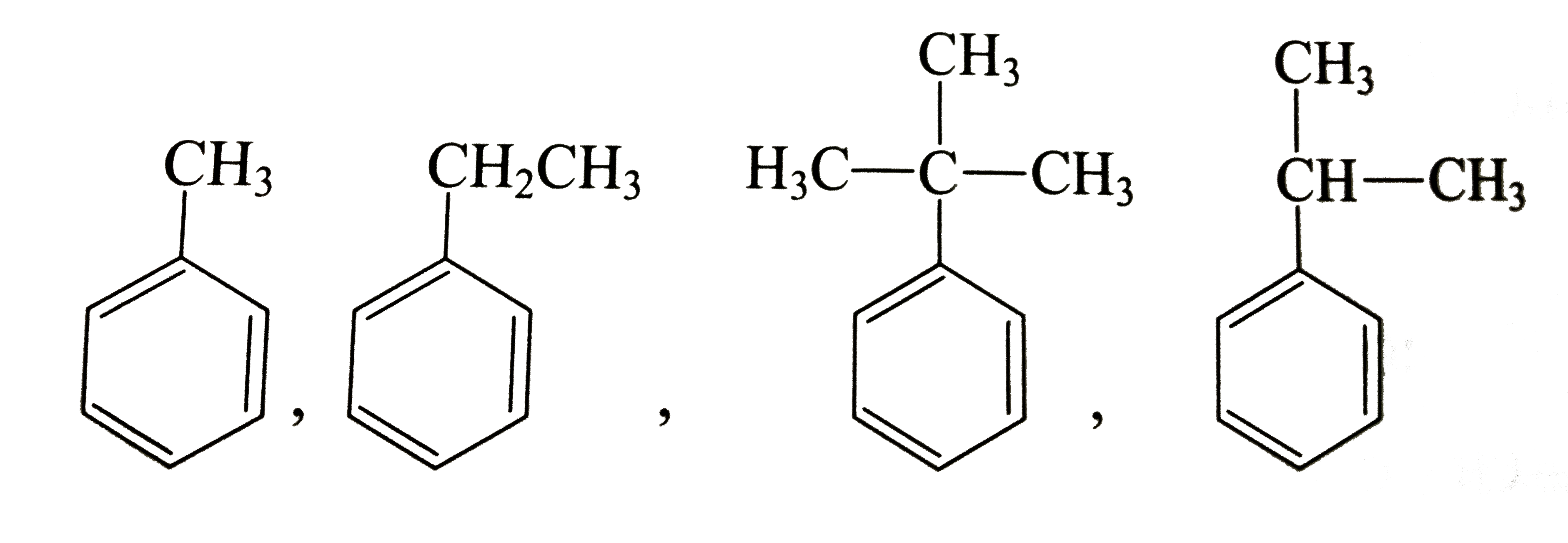Arrange the following in the increasing order of their reactivity towards addition of HCN :
Acetone , acetaldehyde , benzaldehyde , acetophenone
To arrange the given compounds (acetone, acetaldehyde, benzaldehyde, and acetophenone) in increasing order of their reactivity towards the addition of HCN, we need to consider two main factors: steric hindrance and charge density on the carbonyl carbon.
1. Identify the Compounds:
- Acetone: CH₃COCH₃
- Acetaldehyde: CH₃CHO
- Benzaldehyde: C₆H₅CHO
- Acetophenone: C₆H₅COCH₃
2. Understand Reactivity Factors:
- Steric Hindrance: The presence of bulky groups around the carbonyl carbon can hinder the approach of the nucleophile (HCN). More steric hindrance means lower reactivity.
- Charge Density: The electron density on the carbonyl carbon affects its reactivity. A higher electron density can lead to lower reactivity.
3. Analyze Each Compound:
- Acetone: Has two methyl groups (CH₃) attached to the carbonyl carbon, which provides some steric hindrance but less than compounds with bulky groups like phenyl.
- Acetaldehyde: Has one methyl group and one hydrogen attached to the carbonyl carbon, leading to less steric hindrance compared to acetone.
- Benzaldehyde: Contains a phenyl group (C₆H₅) which is bulky, providing significant steric hindrance, making it less reactive than acetaldehyde and acetone.
- Acetophenone: Contains both a phenyl group and a methyl group. The presence of two bulky groups (the phenyl and the carbonyl) makes it the least reactive.
4. Rank the Compounds:
- Based on the analysis:
- Most Reactive: Acetaldehyde (least steric hindrance)
- Next: Acetone (more steric hindrance than acetaldehyde but less than benzaldehyde)
- Next: Benzaldehyde (more steric hindrance due to the phenyl group)
- Least Reactive: Acetophenone (most steric hindrance due to both phenyl and methyl groups)
5. Final Order:
- Increasing order of reactivity towards HCN:
- Acetophenone < Benzaldehyde < Acetone < Acetaldehyde
- Acetone: CH₃COCH₃
- Acetaldehyde: CH₃CHO
- Benzaldehyde: C₆H₅CHO
- Acetophenone: C₆H₅COCH₃
- Steric Hindrance: The presence of bulky groups around the carbonyl carbon can hinder the approach of the nucleophile (HCN). More steric hindrance means lower reactivity.
- Charge Density: The electron density on the carbonyl carbon affects its reactivity. A higher electron density can lead to lower reactivity.
- Acetone: Has two methyl groups (CH₃) attached to the carbonyl carbon, which provides some steric hindrance but less than compounds with bulky groups like phenyl.
- Acetaldehyde: Has one methyl group and one hydrogen attached to the carbonyl carbon, leading to less steric hindrance compared to acetone.
- Benzaldehyde: Contains a phenyl group (C₆H₅) which is bulky, providing significant steric hindrance, making it less reactive than acetaldehyde and acetone.
- Acetophenone: Contains both a phenyl group and a methyl group. The presence of two bulky groups (the phenyl and the carbonyl) makes it the least reactive.
- Based on the analysis:
- Most Reactive: Acetaldehyde (least steric hindrance)
- Next: Acetone (more steric hindrance than acetaldehyde but less than benzaldehyde)
- Next: Benzaldehyde (more steric hindrance due to the phenyl group)
- Least Reactive: Acetophenone (most steric hindrance due to both phenyl and methyl groups)
- Increasing order of reactivity towards HCN:
- Acetophenone < Benzaldehyde < Acetone < Acetaldehyde
Topper's Solved these Questions
- ALDEHYDES ,KETONES AND CARBOXYLIC ACIDSBOOK - MODERN PUBLICATIONCHAPTER - ALDEHYDES ,KETONES AND CARBOXYLIC ACIDSEXERCISE - Conceptula Questions 2
15 Videos
- ALDEHYDES ,KETONES AND CARBOXYLIC ACIDSBOOK - MODERN PUBLICATIONCHAPTER - ALDEHYDES ,KETONES AND CARBOXYLIC ACIDSEXERCISE - NCERT FILE (NCERT IN TEXT QUESTIONS )
8 Videos
- ALDEHYDES ,KETONES AND CARBOXYLIC ACIDSBOOK - MODERN PUBLICATIONCHAPTER - ALDEHYDES ,KETONES AND CARBOXYLIC ACIDSEXERCISE - PRACTICE PROBLEMS
30 Videos
- ALCOHOLS, PHENOLS AND ETHERSBOOK - MODERN PUBLICATIONCHAPTER - ALCOHOLS, PHENOLS AND ETHERSEXERCISE - UNIT PRACTICE TEST (FOR BOARD EXAMINATION)
12 Videos
- BIOMOLECULESBOOK - MODERN PUBLICATIONCHAPTER - BIOMOLECULESEXERCISE - UNIT PRACTICE TEST FOR BOARD EXAMINATION
13 Videos
Similar Questions
Knowledge Check
Arrange the following in the increasing order of reactivity towards aldol condensation reaction
 A(i)<(ii)<(iii)<(iv)B(iv)<(iii)<(ii)<(i)C(iii)<(ii)<(iv)<(i)D(iii)<(iv)<(ii)<(i)
A(i)<(ii)<(iii)<(iv)B(iv)<(iii)<(ii)<(i)C(iii)<(ii)<(iv)<(i)D(iii)<(iv)<(ii)<(i)The increasing order of reactivity towards SN2 reactivity is
ACH3Cl>CH3Br>CH3CH2Cl>(CH3)2CHClBCH3Br>CH3Cl>(CH3)2CHCl>CH3CH2ClCCH3CH2Cl<(CH3)2CHCl<CH3Br<CH3ClD(CH3)2CHCl<CH3CH2Cl<CH3Cl<CH3BrArrange the following in the decreasing order of reactivity towards electrophilic substitution is
 AIIgtIIIgtIVgtIBIIgtIIIgtIgtIVCIIgtIIIgtIVgtIDIgtIIIgtIVgtII
AIIgtIIIgtIVgtIBIIgtIIIgtIgtIVCIIgtIIIgtIVgtIDIgtIIIgtIVgtII
Arrange the following compounds in increasing order of reactivity towards nucleophilic substitution:

View SolutionArrange the following compounds in order of their reactivity toward LiAlH4.

View SolutionArrange the following metal in the increasing order of their reactivity towards water, Zinc, Iron, Magnesium, Sodium
View SolutionArrange the following compounds in order of their reactivity towards LiAlH4

View Solution
Arrange the above in the decreasing order of reactivity towards HBr:
View Solution


